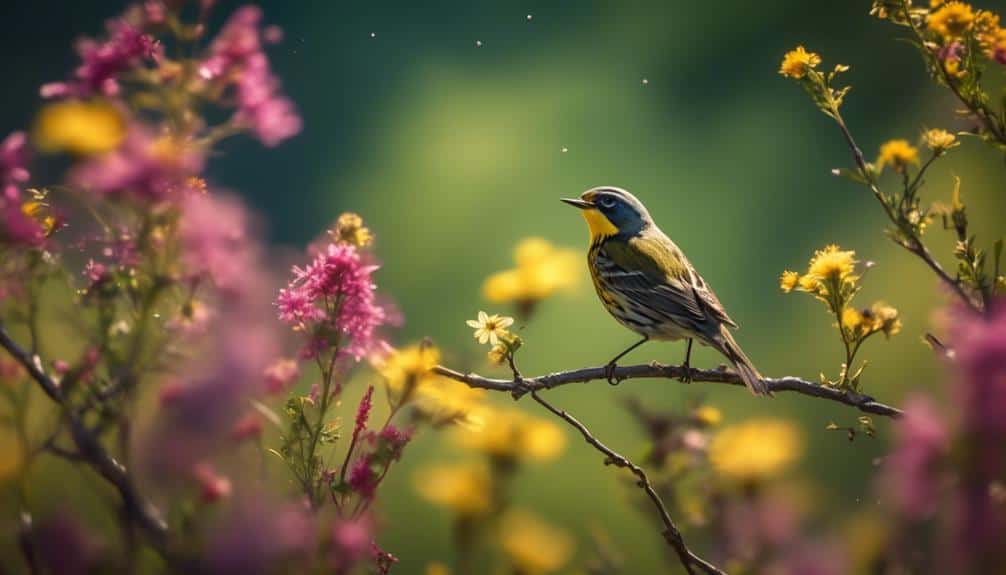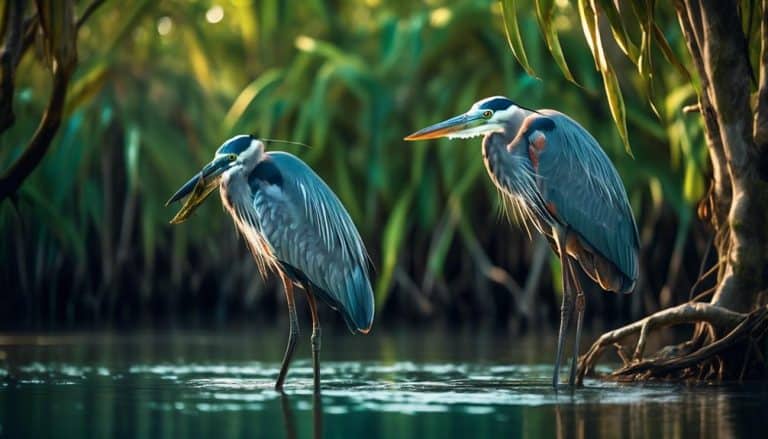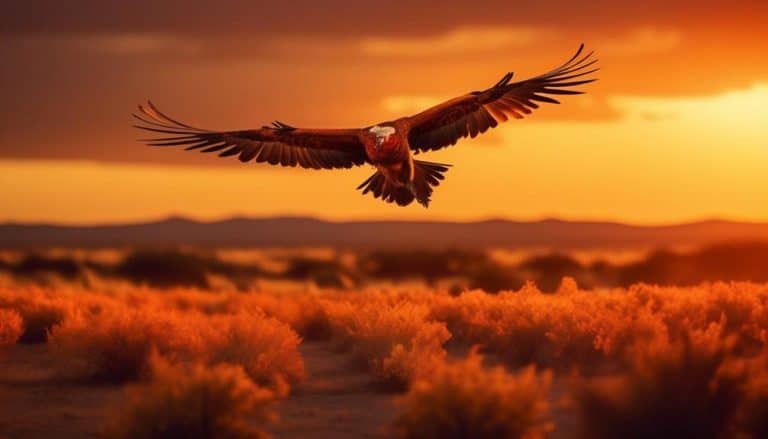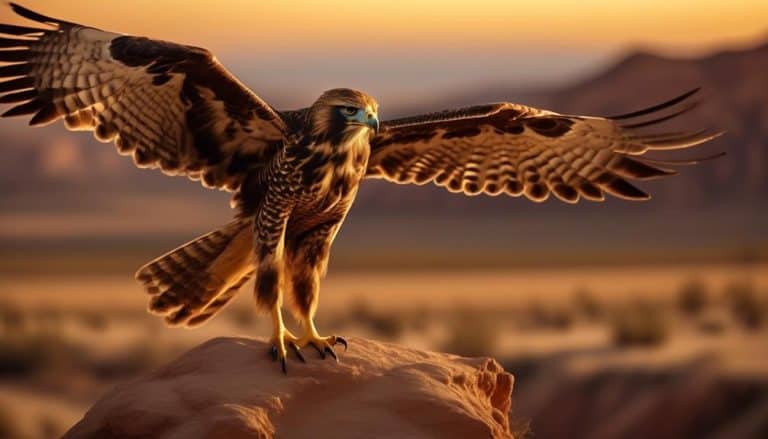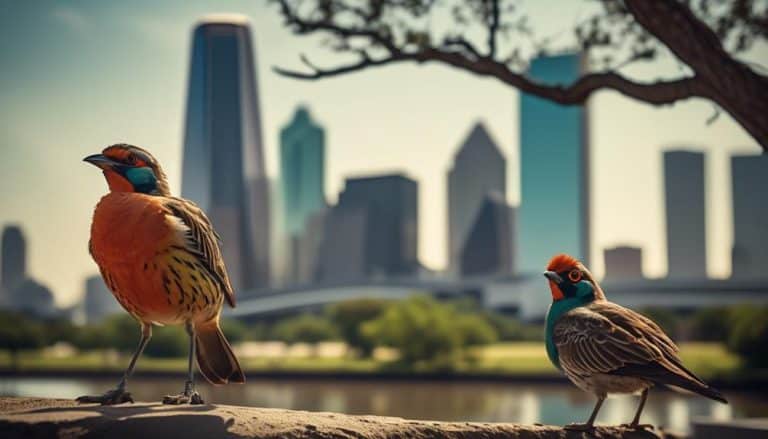When it comes to the diverse avian population found in the beautiful state of Delaware, it's hard to ignore the charm and grace of the small winged creatures that flutter through our skies.
These delicate beings, with their vibrant feathers and melodious songs, have a way of enchanting even the most stoic of hearts.
In this discussion, I invite you to uncover the secrets of the small birds that call Delaware home, as we delve into their unique characteristics, habitats, and the best locations to spot these elusive creatures.
But what makes these small birds truly fascinating? Well, you'll just have to keep reading to find out.
Common Small Birds in Delaware
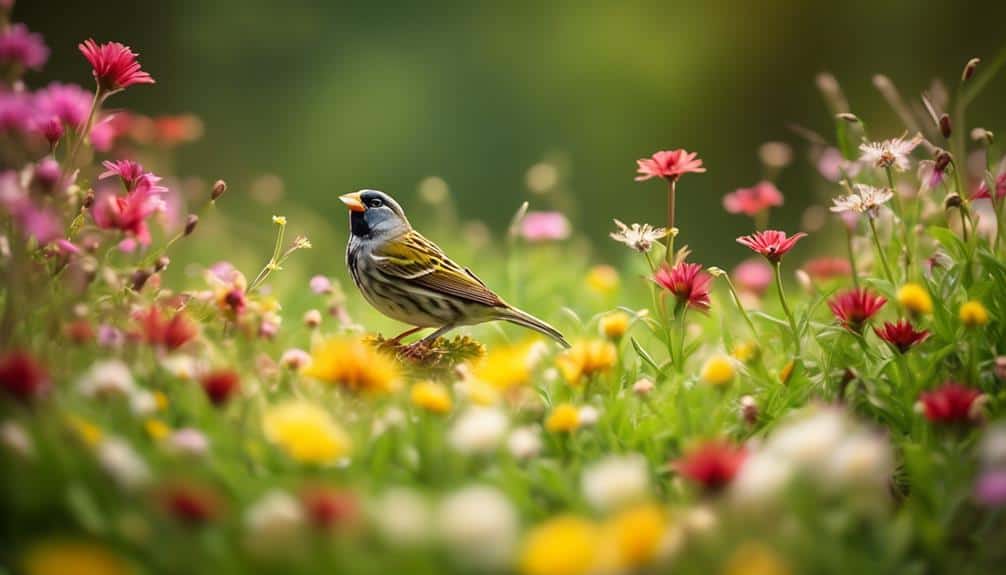
In my observations, I've noticed a variety of common small birds in Delaware. These birds are a delight to watch and can be attracted to your backyard with a few simple birdwatching tips.
One of the most common small birds in Delaware is the American Goldfinch (Spinus tristis). These vibrant yellow birds are often seen perching on thistle plants, as they're primarily seed-eaters. To attract American Goldfinches to your backyard, consider planting thistle or offering nyjer seed in a bird feeder.
Another small bird commonly found in Delaware is the Carolina Wren (Thryothorus ludovicianus). These birds are known for their distinctive songs and can often be heard before they're seen. To attract Carolina Wrens, provide them with a variety of food sources such as insects, suet, and berries. Additionally, they prefer shrubby areas for nesting, so consider planting dense shrubs in your yard.
Lastly, another common small bird in Delaware is the Black-capped Chickadee (Poecile atricapillus). These active and acrobatic birds are known for their boldness and can be attracted to your backyard by offering sunflower seeds and suet.
Identifying Small Birds in Delaware
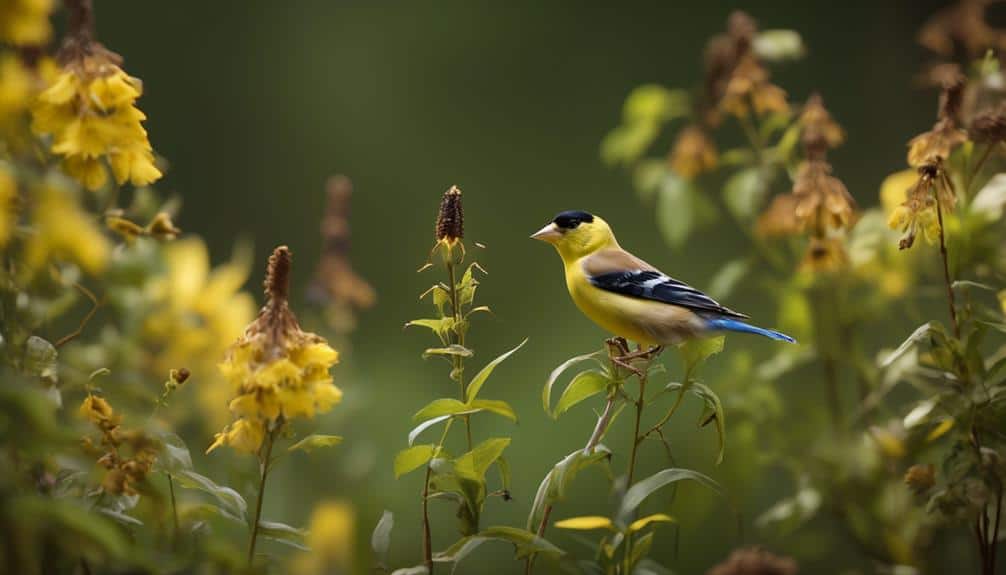
Small birds in Delaware can be identified through careful observation of their physical characteristics and behaviors. When birdwatching in Delaware, it is essential to pay attention to the size, shape, color, and patterns of the birds, as well as their flight patterns and vocalizations. Here are a few birdwatching tips to help you identify small birds in Delaware:
- Take note of the bird's size and shape: Is it small and compact or slender and elongated? Does it have a short beak or a long, thin one? These physical attributes can provide crucial clues for identification.
- Observe the bird's coloration and patterns: Look for distinct markings, such as stripes, spots, or patches. Note the colors of the bird's plumage, both on its body and wings.
- Pay attention to the bird's behavior: Does it hop or walk on the ground? Does it perch high in trees or prefer shrubs? These behaviors can narrow down the possibilities of bird species.
To further aid in identification, here is a table showcasing three common small birds in Delaware:
| Bird Species | Physical Characteristics | Behaviors |
|---|---|---|
| American Robin | Gray-brown back, orange breast | Hops on the ground |
| Song Sparrow | Brown with dark streaks | Perches in shrubs |
| Northern Cardinal | Red plumage, crest on head | Perches high in trees |
Habitats of Small Birds in Delaware
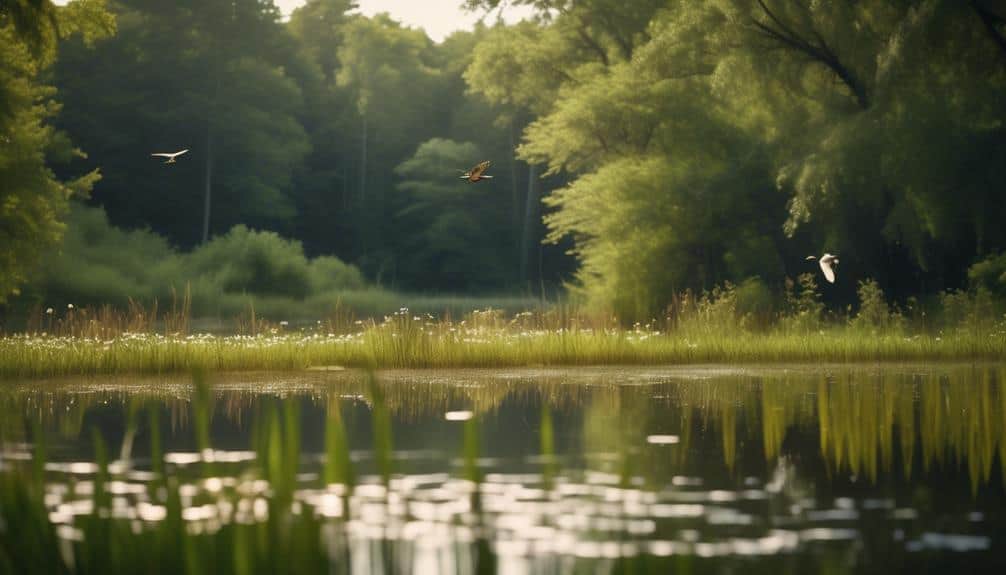
Having examined the physical characteristics and behaviors of small birds in Delaware, it's now essential to explore the specific habitats where these avian species can be found.
Delaware offers a diverse range of habitats that support a wide variety of small bird species. One of the most popular habitats for birdwatching activities is the coastal marshes and wetlands along the Delaware Bay. These areas provide an abundant source of food, such as insects and small fish, and offer ideal nesting sites for birds like the Saltmarsh Sparrow and Clapper Rail.
In addition to the coastal marshes, Delaware also boasts extensive forests and woodlands that serve as vital habitats for small birds. The state's numerous state parks and wildlife refuges, such as Cape Henlopen State Park and Bombay Hook National Wildlife Refuge, provide protected areas for bird species like the Carolina Chickadee and Eastern Bluebird. These forested habitats offer a rich diversity of plant life, which in turn attracts a wide range of insects and other invertebrates, serving as a crucial food source for small birds.
Conservation efforts have played a significant role in preserving and maintaining these habitats for small birds in Delaware. Organizations like the Delaware Audubon Society and the Delaware Department of Natural Resources and Environmental Control have worked tirelessly to protect these habitats and raise awareness about the importance of conserving them. Through initiatives like habitat restoration and public education programs, these organizations have made significant strides in ensuring the long-term survival of small bird populations in Delaware.
Migration Patterns of Small Birds in Delaware
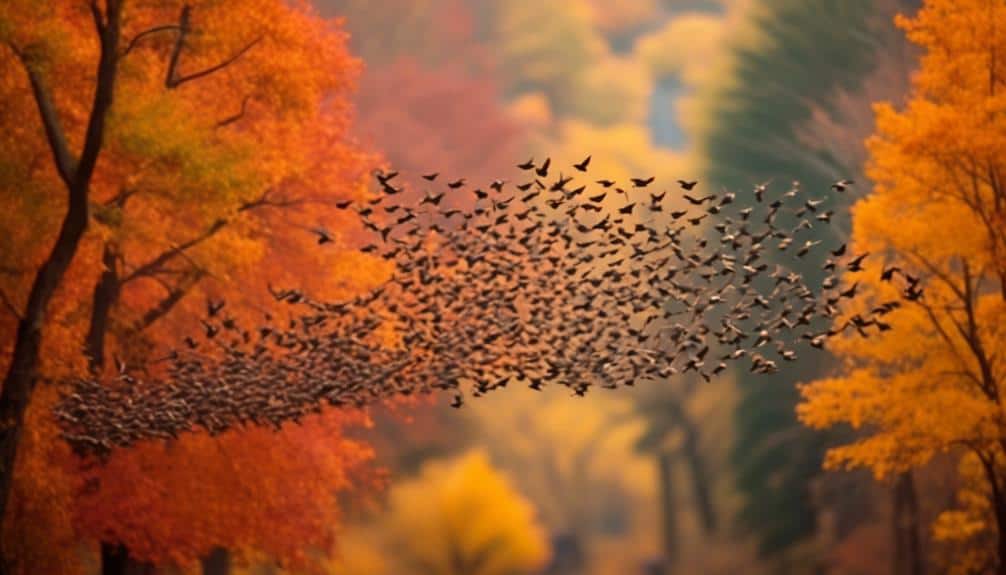
During the seasonal transitions, small birds in Delaware embark on remarkable journeys, navigating vast distances to reach their desired winter or breeding grounds. Migration patterns of small birds in Delaware are a subject of great interest among birdwatching enthusiasts and researchers alike. These journeys are fueled by a combination of instinct and environmental cues, such as changes in temperature and food availability. To better understand these migration patterns, let's take a closer look at some key species and their movements:
| Species | Winter Grounds | Breeding Grounds |
|---|---|---|
| Ruby-throated Hummingbird | Central America and southern Mexico | Eastern United States and southern Canada |
| Blackpoll Warbler | Northern South America | Northern North America (Alaska and Canada) |
| American Goldfinch | Southern United States and Mexico | Northern United States and Canada |
Birdwatching events in Delaware provide opportunities for bird enthusiasts to witness these incredible journeys firsthand. Events such as the Annual Delmarva Birding Weekend attract visitors from around the country to observe and learn about the migration patterns of small birds in Delaware.
However, these small birds face numerous threats that impact their populations in Delaware. Habitat loss, due to urbanization and agriculture, is one of the major concerns. Climate change also plays a role, as it alters the timing of migration and affects the availability of food along their routes. Additionally, collisions with buildings and communication towers pose a significant threat to these small birds during their long-distance journeys.
Best Locations to Spot Small Birds in Delaware

One of the prime locations for observing small birds in Delaware is the Bombay Hook National Wildlife Refuge. This expansive refuge is home to a diverse range of bird species, making it an excellent spot for bird watching enthusiasts.
Here are some tips for attracting small birds in your backyard and the equipment needed for bird watching in Delaware:
- Plant native flowers and shrubs: Small birds are attracted to areas with abundant food sources, such as nectar from flowers and insects found in shrubs. Planting native species will provide a natural habitat for these birds.
- Set up bird feeders: Offering a variety of bird feeders with different types of seeds will attract a wide range of small bird species. Make sure to clean the feeders regularly to prevent the spread of diseases.
- Provide fresh water: Small birds need access to clean water for drinking and bathing. Installing a bird bath or small water feature will entice them to visit your backyard.
- Use binoculars: A good pair of binoculars is essential for bird watching. Look for ones with a wide field of view and good magnification to observe small details from a distance.
- Carry a field guide: A field guide specific to Delaware birds will help you identify the different species you encounter. It will also provide valuable information about their habits and habitats.
Frequently Asked Questions
How Do Small Birds in Delaware Communicate With Each Other?
Small birds in Delaware communicate with each other through bird songs and vocalization patterns. These vocalizations serve as a way for them to communicate various messages such as territorial boundaries, mating calls, and warning signals.
What Is the Average Lifespan of Small Birds in Delaware?
The average lifespan of small birds in Delaware varies depending on the species. Factors such as predation, habitat quality, and breeding patterns play a role in determining how long these birds live.
Are There Any Endangered Small Bird Species in Delaware?
Yes, there are endangered small bird species in Delaware. Conservation efforts are in place to protect them. Threats they face include habitat loss, pollution, and climate change. It is crucial to preserve their habitats for their survival.
Do Small Birds in Delaware Migrate to Other States During the Winter?
During the winter, small birds in Delaware migrate to other states. They do this to find warmer climates and better feeding opportunities. Their migration patterns vary depending on the species and their specific feeding habits.
How Do Small Birds in Delaware Protect Themselves From Predators?
When it comes to avoiding predators, small birds in Delaware have some clever tricks up their feathers. From choosing safe nesting sites to using camouflage and alarm calls, they have developed effective strategies for survival.
Conclusion
As I stood in the lush Delaware wetlands, the small birds flitted from tree to tree, their vibrant plumage blending with the verdant foliage.
These tiny creatures, like delicate brushstrokes on a canvas, symbolize the resilience of nature amidst the encroachment of human development.
Their intricate songs echoed through the air, reminding me of the intricate interconnectedness of all living beings.
Observing these small birds in their natural habitat was a humbling experience, a testament to the beauty and fragility of our world.

